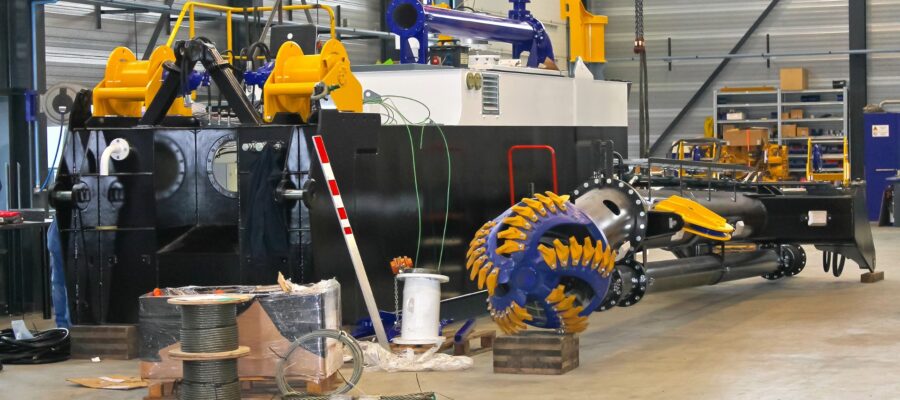
Excavation projects form the backbone of numerous construction endeavors, from building foundations to infrastructure development. At the heart of many excavation projects lies the excavator pump, a versatile tool essential for managing water, transporting materials, and ensuring the smooth progress of operations. This article delves into the world of excavator pumps, exploring their applications across different excavation projects.
Understanding Excavator Pumps
Excavator pumps, also known as hydraulic pumps, are integral components of excavators’ hydraulic systems. These pumps utilize hydraulic power to perform various tasks, including digging, lifting, and moving materials. However, beyond their primary functions, excavator pumps are crucial in water management and dewatering during excavation projects.
Types of Excavation Projects
Excavation projects vary widely in scope, scale, and purpose, each presenting unique challenges and requirements for fluid management. Slurry pumps are crucial in several excavation projects where abrasive and viscous fluids, such as slurry, sediment, or debris, necessitate specialized pumping solutions. Here are some common types of excavation projects that often require slurry pumps:
- Underwater Excavation/Dredging: Projects involving the removal of sediment, silt, and debris from underwater environments, such as rivers, lakes, harbors, and ports, require slurry pumps for effective dredging. These pumps help maintain navigational channels, restore waterway depths, and facilitate environmental remediation efforts.
- Mining and Quarrying: Excavation projects in mining and quarrying operations often encounter abrasive slurries containing minerals, ores, or aggregates. Slurry pumps are essential for transporting these slurries from extraction sites to processing facilities, facilitating material handling, and ensuring efficient resource extraction.
- Tunneling and Underground Construction: Excavation projects involving tunneling, underground utility installation, or subway construction frequently require slurry pumps for dewatering and sediment control. These pumps help manage groundwater inflows, control tunnel face stability, and transport excavated materials from underground excavation sites.
- Pipeline Installation and Maintenance: Excavation projects for laying pipelines, such as water mains, sewer lines, or oil and gas pipelines, often rely on slurry pumps for trenching and backfilling operations. Slurry pumps assist in excavating trenches, removing spoil, and managing fluid flows during pipeline installation and maintenance activities.
- Environmental Remediation: Excavation projects aimed at environmental remediation, including landfill excavation, contaminated site cleanup, and wetland restoration, often involve handling hazardous or contaminated slurry. Slurry pumps are crucial in removing contaminated soil, transporting sediments for treatment, and mitigating environmental hazards.
- Foundation Excavation and Construction: Excavation projects for building foundations, basements, or underground structures require effective dewatering to create stable working conditions. Slurry pumps are utilized for groundwater control, dewatering excavations, and managing seepage to prevent water ingress and ensure foundation stability.
- Aggregate Processing and Sand Extraction: Excavation projects related to aggregate processing, sand extraction, or gravel mining often involve pumping abrasive slurries containing crushed stone, sand, or gravel. Slurry pumps are integral for transporting these materials from extraction sites to processing plants, facilitating material sorting, washing, and screening.
- Slope Stabilization and Erosion Control: Excavation projects aimed at slope stabilization, erosion control, or shoreline protection may require slurry pumps for hydraulic erosion control measures. These pumps assist in pumping slurry-based materials, such as soil cement or hydroseeding mixes, for slope stabilization and erosion control applications.
These are just a few examples of excavation projects where slurry pumps are commonly utilized. In each case, the project’s specific requirements, including the type and concentration of solids in the slurry, the desired flow rate and pressure, and the environmental considerations, dictate the selection and deployment of slurry pumping solutions.
Types of Excavator Slurry Pumps
- Submersible Slurry Pumps: Designed to operate entirely submerged in the fluid being pumped, submersible slurry pumps are indispensable in underwater excavation projects such as dredging, underwater mining, or tunneling. Their ability to navigate the depths below the water table makes them invaluable assets in extracting water, slurry, or sediment from submerged environments.
- Vertical Slurry Pumps: Vertical slurry pumps feature a unique vertical shaft and submerged pump bowl configuration, making them ideal for applications requiring limited space or fluids to be extracted from deep sumps or pits. These pumps excel in dewatering trenches, draining underground chambers, and handling high-solid-content slurries encountered in excavation projects.
- Horizontal Slurry Pumps: With a horizontal shaft and casing, horizontal slurry pumps offer versatility and reliability in various excavation applications. From dewatering excavations to transporting slurries and processing mine tailings, these pumps serve as stalwart companions in surface mining operations, construction site dewatering, and aggregate processing plants.
- Centrifugal Slurry Pumps: Leveraging centrifugal force to propel fluids through the pump system, centrifugal slurry pumps exhibit robustness and resilience in handling abrasive and corrosive slurries prevalent in excavation environments. Available in single-stage or multistage configurations, these pumps efficiently and efficaciously cater to the diverse demands of excavation projects.
- Hydraulic Slurry Pumps: Powered by hydraulic systems, hydraulic slurry pumps seamlessly integrate with excavators and construction equipment, offering unparalleled versatility and adaptability. Whether dredging, silt removal, or slurry transport, these pumps play a vital role in fluid management on excavation sites, contributing to enhanced productivity and operational efficiency.
- Heavy-Duty Slurry Pumps: Engineered to withstand the rigors of demanding excavation conditions, heavy-duty slurry pumps epitomize reliability and durability. With robust materials and components, these pumps excel in high-temperature, corrosive, and abrasive environments, ensuring uninterrupted fluid management throughout excavation projects.
Conclusion
Excavator and slurry pumps are indispensable components in excavation projects, playing crucial roles in managing water, transporting materials, and ensuring efficient operations. Whether underwater dredging, mining operations, or environmental remediation, these pumps offer specialized solutions for handling abrasive and viscous fluids encountered in excavation environments. The diverse range of excavator slurry pumps, including submersible, vertical, horizontal, centrifugal, hydraulic, and heavy-duty pumps, underscores their adaptability to various project requirements. As technology advances, these pumps will continue to evolve, driving innovation and efficiency in construction endeavors. With their unwavering performance, durability, and versatility, excavator pumps, and slurry pumps will remain essential tools in the arsenal of excavation professionals, shaping the landscapes of tomorrow with their indispensable contributions.



Post a Comment